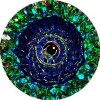Posted 18 August 2013 - 01:41 AM
I keep seeing many things in code. I look at code a try to pick it apart so I can see how it ticks to try and learn something from it, and the following questions relate to what I have seen.
[indent=1]First Question[/indent]
What is the difference with the following, and what is a good place to learn what that particular thing does.
What is a good object oriented tutorial. I see may scripts use this and I have no Idea how this part works, I do know that lua does have support for it, just not like java, and that's about all I know about it.
[indent=1]First Question[/indent]
What is the difference with the following, and what is a good place to learn what that particular thing does.
- test["first"]
- test.first
- test:first
What is a good object oriented tutorial. I see may scripts use this and I have no Idea how this part works, I do know that lua does have support for it, just not like java, and that's about all I know about it.


